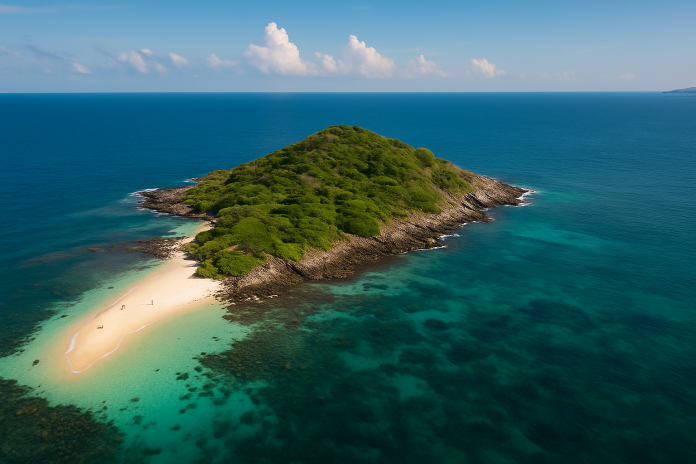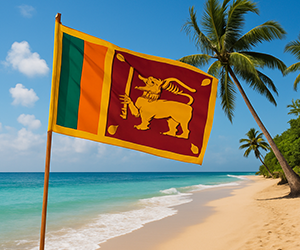Introduction
Nestled off the coast of Nilaveli in the Eastern Province of Sri Lanka lies one of the island’s most stunning marine treasures—Pigeon Island National Park. Renowned for its vibrant coral reefs, crystal-clear waters, and diverse marine life, this protected area is a dream destination for snorkelers, divers, nature enthusiasts, and eco-conscious travelers.
Named after the Blue Rock Pigeon, a rare species of bird found on the island, Pigeon Island is one of only two marine national parks in Sri Lanka. It covers an area of roughly 471 hectares, including both the island and the surrounding coral-rich waters. With its shallow reef platforms, colorful fish, and friendly reef sharks, the park provides an unforgettable undersea adventure for all ages.
For travelers looking to escape the crowds of the south and west coasts, Pigeon Island offers a quieter, more pristine experience. The park’s protected status ensures that its unique ecosystem remains intact, making it a critical site for both marine conservation and eco-tourism. Whether you’re floating above the reef with a snorkel or simply soaking in the serene beauty of the coastline, Pigeon Island National Park promises an experience like no other in Sri Lanka.
🔹 History and Significance
Pigeon Island was first declared a Sanctuary in 1963 and later upgraded to a National Park in 2003. It derives its name from the Blue Rock Pigeon that once flourished here. The park has a rich history, including being a military training ground during colonial times.
Ecologically, it’s home to over 100 species of coral and 300 species of reef fish, making it one of the most diverse marine environments in Sri Lanka. It is also a key habitat for Blacktip Reef Sharks, Green Turtles, and Hawksbill Turtles.
Despite conservation efforts, challenges such as coral bleaching and over-tourism remain. However, the site continues to be vital for marine research, education, and eco-tourism.
🔹 How to Get to Pigeon Island
- By Road: 6–7 hours from Colombo, or 3–4 hours from Kandy or Anuradhapura.
- By Train: Daily services to Trincomalee, then tuk-tuk to Nilaveli Beach.
- By Boat: From Nilaveli Beach—only 1 km offshore, with group or private boat options available.
Book early during peak season and ensure you use a registered tour operator.
🔹 Entrance Fees and Park Rules
Fees (subject to change):
- Foreign adult: LKR 3,000–4,000
- Foreign child: LKR 1,500–2,000
- Local adult: LKR 60–100
- Boat & snorkel gear: additional charges
Rules:
- No touching corals or marine life
- Use reef-safe sunscreen
- Don’t litter
- Respect swimming zones
🔹 Snorkeling and Diving at Pigeon Island
This is the highlight of any visit. Shallow waters and coral gardens make it ideal for beginners and kids.
Marine life to see:
- Blacktip Reef Sharks
- Clownfish, Parrotfish
- Turtles, Cuttlefish
Tips:
- Morning snorkeling = better visibility
- Bring or rent waterproof camera
- Wear a life jacket and reef-safe sunscreen
🔹 Best Time to Visit Pigeon Island
- Best Season: April to October
- Avoid the monsoon (November to February)
- Morning hours offer the best visibility and calm waters
🔹 Accommodation Near Pigeon Island
Budget:
- Hotel Blue Waves
- Sea Zone Hotel Nilaveli
Mid-range:
- Nilaveli Beach Hotel
- Anantamaa Hotel
Luxury:
- Trinco Blu by Cinnamon
- Uga Jungle Beach
Most offer help booking boat tours and activities.
Other Things to Do Nearby
While Pigeon Island is the star attraction, the surrounding area of Trincomalee and Nilaveli offers a host of other incredible sights and activities:
🕌 Koneswaram Temple & Fort Frederick
One of Sri Lanka’s most sacred Hindu temples, Koneswaram Temple, sits atop a cliff with sweeping ocean views. Adjacent to it, Fort Frederick—built by the Portuguese and later used by the Dutch and British—is a historical site with colonial-era architecture and free-roaming deer.
🐋 Whale and Dolphin Watching
Between March and August, whale watching tours depart from Trincomalee in search of blue whales and spinner dolphins. This is one of the best spots in Asia for marine mammal sightings.
🏖️ Nilaveli & Uppuveli Beaches
Relax on some of the quietest and most beautiful beaches on Sri Lanka’s east coast. These areas are perfect for sunbathing, beach games, or enjoying fresh seafood at a beachside café.
🛶 Canoeing and Lagoon Tours
Take a lagoon tour or kayak ride to explore mangrove ecosystems and birdlife near the coast, especially in areas like Thiriyai Lagoon.
🔹 Conclusion
Pigeon Island National Park is a true gem of Sri Lanka’s eastern coastline. Its coral reefs, teeming marine life, and breathtaking scenery make it one of the best places in the country for eco-tourism and marine adventures. From snorkeling with reef sharks to relaxing on pristine beaches, this park offers unforgettable experiences for all types of travelers.
Beyond the island, the nearby town of Trincomalee adds cultural, historical, and spiritual depth to your journey. Whether you’re a solo traveler, a couple on a honeymoon, or a family on holiday, Pigeon Island is a destination that deserves a place on your itinerary.
By visiting responsibly, supporting local guides, and respecting nature, you help preserve this marine paradise for future generations.
Start planning your trip to Pigeon Island today and uncover one of Sri Lanka’s best-kept secrets!
Explore more Sri Lanka travel guides and destination tips at lanka.guide




